In the News
News on College Commitments
USask team wins international teaching award for Canadian history game
Homesteaders teaches the history of prairie settlement through tabletop gamingFrom Nigeria to USask: Student leader builds campus connections
Economics student Pamimo Akinjide was a featured speaker at USask's Black History Month launch eventTen Indigenous College of Arts and Science students honoured with USask achievement awards
Nearly 50 Indigenous USask students received awards during ceremony on March 13
Women Plus Water Conversation: Water + Gender
Mar 19, 2026An event in recognition of World Day for Glaciers and World Water Day
Women Plus Water Conversation: Women + Cryospheric Decade
Feb 11, 2026An event in recognition of the International Day of Women and Girls in Science
Women Plus Water Conversation: Water + Mining
Jan 22, 2026A conversation exploring the relationship between water and mining, with a focus on the challenges and opportunities for advancing sustainable and equitable practices
Book Launch: ReVisions: Speculating in Literature and Film in Canada
Jan 30, 2026Dystopian and apocalyptic fiction and film is explored in a new book edited by Dr. Wendy Roy (PhD) of the Department of English
Northern lights explained: What makes the sky dance in colour?
Space physicist Dr. Daniel Billett (PhD) explains the science behind the northern lights and why they’re glowing so brightUSask scholars receive prestigious Fulbright Canada research placements
Anthropology professor Dr. Clinton Westman (PhD) and history professor Dr. Matthew Neufeld (PhD) have received Fulbright Canada research placements
Arts leadership micro-credential coming to USask this summer
The June 9–July 18 online course is the first micro-credential from the College of Arts and ScienceMétis politics and governance the focus of new USask course
“POLST 324: Métis, otehpayimusuak and âpihtawikosisânak Governance” is the political studies department’s first Métis-centred courseOne in 10 USask Arts and Science students now completing certificates
Growing number of students mix and match interests through smaller academic programs
Portfolio Updates
Introduction
By acting thoughtfully, and jointly, the College of Arts and Science will renew, strengthen, and advance arts and science disciplines, programs, and research, scholarly, and artistic work, and collaborate, thereby setting strategic directions for the university as a whole.
Creativity is empowering and in the College of Arts and Science, creativity is in all that we do. It is encouraged, accepted, championed, and rewarded.
We will create and strengthen partnerships inside and outside the college and university, create diverse teams and nurture critical skills, set platforms for identifying local and global issues and solve complex problems.
Together, we will be innovative: taking measured risks and working dynamically.
With an enthusiastic and energetic approach to change, the College of Arts and Science will create innovative plans in anticipation of future issues, including infrastructure, funding, programs, research, scholarly and artistic work, enrolment (vision in what we do, and how we do it).
Our students will know that they belong, that this college is truly theirs, and that opportunities are unlimited.
Our college family comprises many valued strands of communities. We are enriched when we embrace all points of view, cultural diversity, and backgrounds: this is especially appropriate for a college as diverse as Arts and Science.
"Internships offer a sort of safe space for you to put your learning into practice. They are a soft-launch into the working world where you can test your skills and put what you learn in class— often abstract concepts applied to theoretical situations— to good use, without the added pressure of doing it for money. Experiential learning is the best way to prove, even just to yourself, that you know what you’re doing and that there is so much potential for turning your degree into a career. "
Eden, 4th-year BA student
College-Specific Commitments


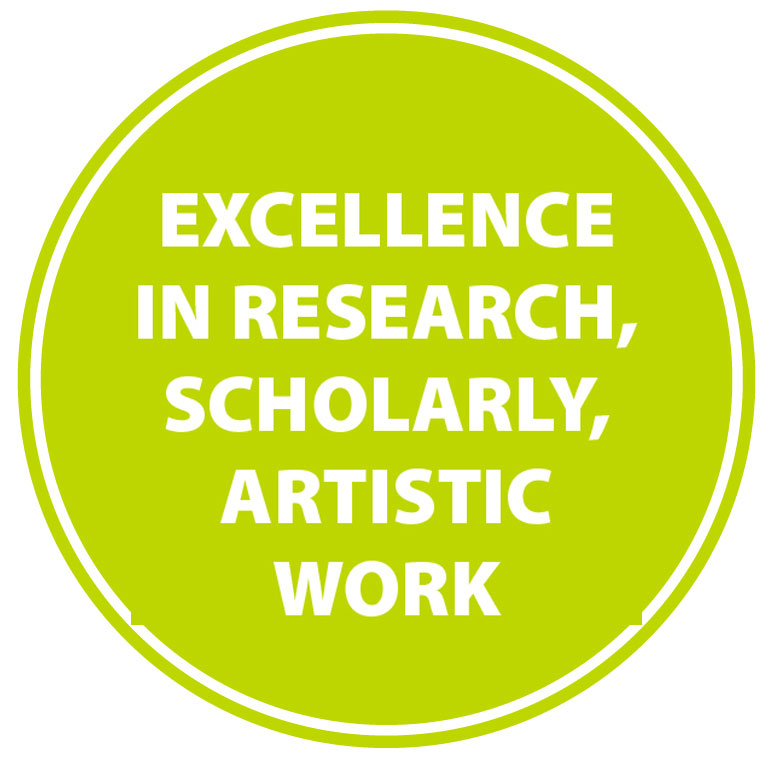

With an enthusiastic and energetic approach to change, the College of Arts and Science will create innovative plans in anticipation of future issues, including infrastructure, funding, programs, RSAW, enrolment (vision in what we do, and how we do it). Our students will know that they belong, that this college is truly theirs, and that opportunities are unlimited. Our college family is comprised of many valued strands of communities. We are enriched when we embrace all points of view, cultural diversity, and backgrounds: this is especially appropriate for a college as diverse as Arts and Science.
Put Students First
Recruitment, Retention, Development, Experience, Success
- Build an Arts and Science Student Hub to give students direct and immediate access to the co-located services they need, and a gathering space for collaborations, pop-up performances, readings and conversation;
- Target recruitment to increase student enrolment in programs with capacity, and create capacity in programs with high demand;
- Increase retention of students between first- and second-year, with special attention to Arts and Science Indigenous student populations, and individuals who are among the first generation in their families to attend university;
- Improve the student experience, build student community, and formally recognize non-credit learning opportunities with co-curricular record;
- Promote and facilitate internationalization through study abroad, student exchange, and international student recruitment initiatives.
Guidepost:
Increase in student satisfaction, reflected in qualitative and quantitative ways
Growth of enrolment and retention rates
More inbound and outbound students participating in varied international activities
Collect feedback about graduated students and make connection to employers
Related News
USask team wins international teaching award for Canadian history game
Homesteaders teaches the history of prairie settlement through tabletop gamingFrom Nigeria to USask: Student leader builds campus connections
Economics student Pamimo Akinjide was a featured speaker at USask's Black History Month launch eventTen Indigenous College of Arts and Science students honoured with USask achievement awards
Nearly 50 Indigenous USask students received awards during ceremony on March 13Inspire Excellence and Increase Diversity and Equity in Faculty and Staff
- Build and retain an outstanding faculty and staff complement:
- Increase college’s percentage of and support to Indigenous faculty, and Indigenous role models in all fields;
- Increase percentage of women promoted in a timely manner to full professor in all departments;
- Increase percentage of women in college leadership positions and science, technology, engineering, and mathematics (STEM) fields;
- Ensure plurality of voices in experiences, diversity of community, interests and issues related to gender and sexuality;
- Ensure commitment to diversity is long-term, sustainable, authentic, and self-perpetuating.
Guidepost:
Contribute to the university’s commitment to recognized Indigenous leadership at all levels of the academy, administration, and governance
Indigenous faculty are thriving in terms of merit, tenure and promotion
Address in real and tangible ways the underrepresentation of women scholars at senior ranks
Enhance our position as an institutional leader of diversity, equity and inclusion
Related News
Women Plus Water Conversation: Water + Gender
Mar 19, 2026An event in recognition of World Day for Glaciers and World Water Day
Women Plus Water Conversation: Women + Cryospheric Decade
Feb 11, 2026An event in recognition of the International Day of Women and Girls in Science
Women Plus Water Conversation: Water + Mining
Jan 22, 2026A conversation exploring the relationship between water and mining, with a focus on the challenges and opportunities for advancing sustainable and equitable practices
Inspire and Foster Excellence in Research, Scholarly and Artistic Work
- Deepen the culture of RSAW engagement and activity by providing a suite of supports, services and strategies tailored to faculty and students;
- Appreciate the rich diversity of RSAW approaches, resources, timescales, outcomes and impacts across all disciplines in our college: humanities, fine arts, social sciences, science and technology;
- Incubate cross-disciplinary clusters from existing and emerging RSAW strengths;
- Partner with community and institutional initiatives to support all aspects of Indigenizing RSAW;
- Build capacity and continue to advance community-engaged RSAW across the college;
- Celebrate and champion the impact and achievements of our artists, scholars, and researchers, acknowledging that those impacts and outcomes vary greatly within the rich diversity of our RSAW activities.
Guidepost:
Empower and support our researchers, scholars and artists at all ranks to engage in RSAW activity, and to promote the value of their work
Become a partner of choice for national and international collaborators
Increase number of competitive applications and the success rates in all competitions, including Tri-Agency and other sources of funding
Related News
Book Launch: ReVisions: Speculating in Literature and Film in Canada
Jan 30, 2026Dystopian and apocalyptic fiction and film is explored in a new book edited by Dr. Wendy Roy (PhD) of the Department of English
Northern lights explained: What makes the sky dance in colour?
Space physicist Dr. Daniel Billett (PhD) explains the science behind the northern lights and why they’re glowing so brightUSask scholars receive prestigious Fulbright Canada research placements
Anthropology professor Dr. Clinton Westman (PhD) and history professor Dr. Matthew Neufeld (PhD) have received Fulbright Canada research placementsImplement New Curricula
- Equip our students with the skills, knowledge, and cultural competencies needed for the challenges and opportunities of the twenty-first century;
- Implement new degree requirements for all our students: English Language Writing, Quantitative Reasoning, Indigenous Learning;
- Encourage and support faculty to offer courses and programs that cross traditional departmental and disciplinary lines;
- Encourage and support faculty to offer courses and programs that extend off campus and into local and regional communities;
- Encourage and support students to take courses for credit in select locales around the world;
- Develop a School of Architecture and Visual Arts with vibrant interdisciplinary curricula that embrace, reinforce, and amplify Saskatoon’s standing as a city of economic and artistic ambition.
Guidepost:
Students attain skills for forming conclusions, judgements, or inferences from quantitative information; have a writing-intensive experience to achieve competency in writing; learn the context of the contemporary and historical position of Indigenous people, and in so doing also understand the need to challenge and transform core elements of settler colonialism
Faculty offer courses and programs that attract, and meet the needs of, a changing student population that is more diverse and mobile than ever before
Related News
Arts leadership micro-credential coming to USask this summer
The June 9–July 18 online course is the first micro-credential from the College of Arts and ScienceMétis politics and governance the focus of new USask course
“POLST 324: Métis, otehpayimusuak and âpihtawikosisânak Governance” is the political studies department’s first Métis-centred courseOne in 10 USask Arts and Science students now completing certificates
Growing number of students mix and match interests through smaller academic programsAlignment to the University Plan

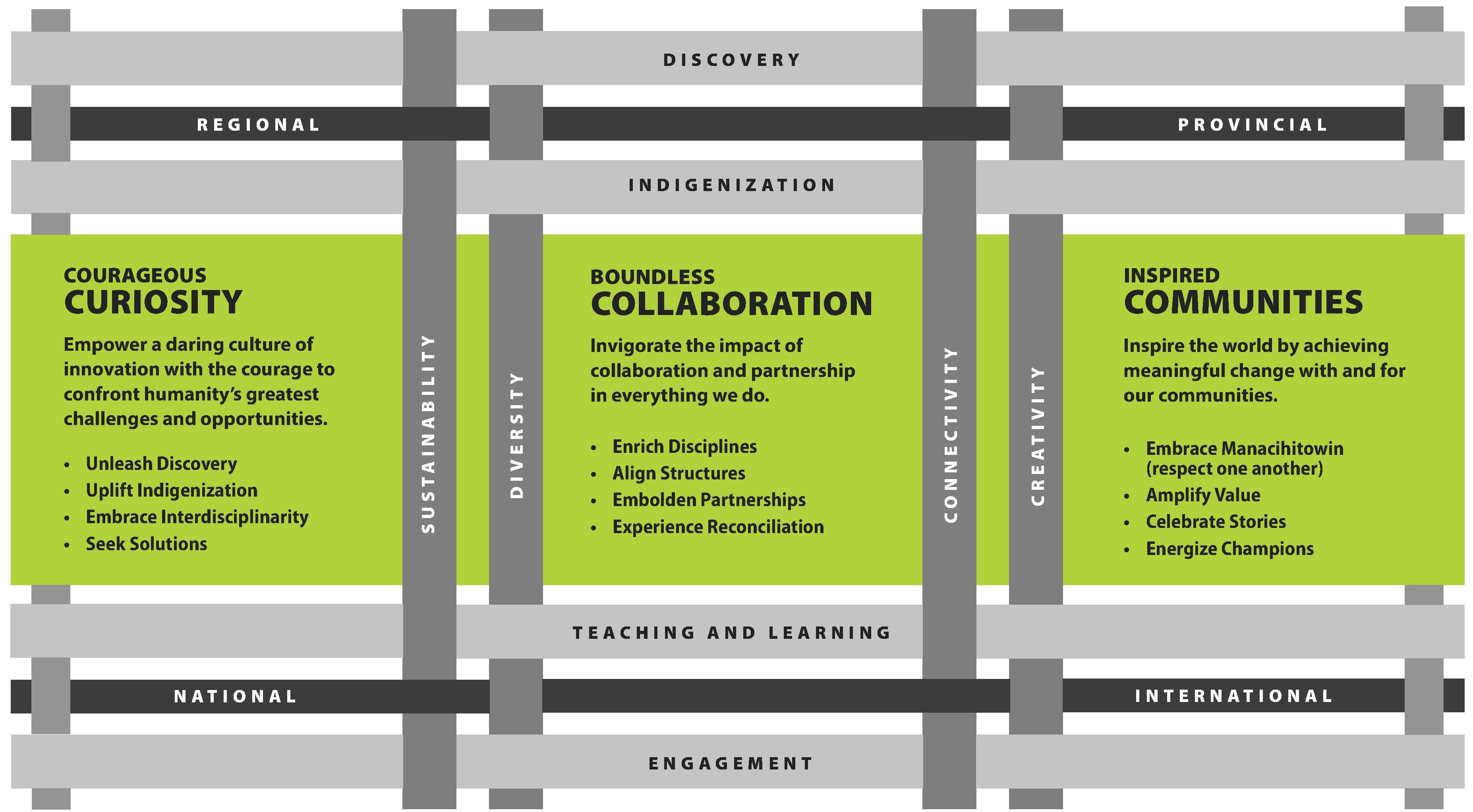
OUR STRATEGIC FRAMEWORK: “THE WEAVE”
The College will align its strategic commitments and related goals and objectives to the university’s ambition to be the university the world needs:
- Transformative Decolonization Leading to Reconciliation. The world needs a university in which Indigenous concepts, methodologies, pedagogies, languages, and philosophies are respectfully woven into the tapestry of learning, research, scholarship, creativity, and community engagement.
- Productive Collaboration. The world needs a university in which research and innovation are inspired by and accountable to community partners.
- Meaningful Impact. The world needs a university resolutely committed to measuring its own success in terms of the aspirations of the communities it serves.
- Distinguished Learners. The world needs a university whose graduates have the drive, the curiosity, and the humility to work with others in addressing the greatest challenges and opportunities the world faces.
- Global Recognition. The world needs a university that sets the standard in learning, research, scholarship, creativity, and community engagement.
By 2025, the job market and technology will have changed, and the College of Arts and Science, through our students, staff and faculty, will ‘create the times’. A sustained breadth of knowledge-creation allows us to capitalize on existing and unpredictable questions and challenges of the future.
We will reach out more broadly across the college and see that the synergy of knowledge is bigger than the convergence of 21 major disciplines. We will use current and new frameworks for problem solving.
We need to work closely with the institution on risk mitigation for our top risks: academic program capacity and equipment age; financial reserves; cyber security; competitive, funded and in-compliance RSAW; communications; technological innovation; management structures; health and safety; post-secondary education competition; availability of information about critical operations and processes.
The college is an ecosystem, with students and researchers, scholars, and artists working across boundaries. The students who see boundaries as porous at the University are Arts and Science students. We are a college in tune with today’s problem-centric needs: our diversity is at the heart of why our college is such an asset to the province and beyond.
Strategic Commitments to the University’s Plan
-
- Join University to embolden partnerships in strategic developments and outreach opportunities:
-
- “Galleries Reimagined”: Place Indigenous representation and engagement as cornerstones of the reimagined approach to visual arts on campus. Include Indigenous peoples in the hub’s activities, targeting growth of the university’s collection of works by Indigenous artists, and prioritizing partnerships with Indigenous arts organizations and artists under the new academic programming structure.
-
- Museum of Natural Sciences Revitalization: Update and redevelop to enhance its standing as a signature feature of this campus: a hub of scientific research, teaching, and outreach; a prime destination for families, school groups, and visitors to the city; and a vital link between the campus and the community. Build on our success in captivating and inspiring visitors, so that it serves as an inclusive space that respects the land we are on and the Indigenous peoples and cultures here.
- Sustain, coordinate, expand environmental programming: Dovetail with schools and colleges and departments, and coordinate our environmental initiatives with the Global Institute for Water Security, Global Water Futures, Global Institute for Food Security, Plant Phenotyping and Imaging and Research Center.
- Expand and re-envision Northern programming strategy. Build on current and past successes and use Prince Albert and La Ronge as jumping-off points for programs, faculty, and facilities in the north. Pursue creative course delivery options with our partners in regional colleges and communities. Enhance land- and community-based programming. Support a revisioning of the Emma Lake Kenderdine Campus.
- Increase internships and experiential learning: increase opportunities for students and engage more students in those opportunities; hire outward-looking new faculty and continue to align our degrees and programs to best equip our students for the challenges and opportunities of the future.
- Connect more meaningfully with our college alumni and the new generation of donor investors who seek long-term sustainable impact. Enable and enhance a culture of philanthropy founded on relationships built to last and evolve over a lifetime. Support lifelong learning, and in doing so involve seniors and retirees in college life.
- Join University to embolden partnerships in strategic developments and outreach opportunities:
The College will align its strategic commitments and related goals and objectives to the university’s aspirations:
- Transformative Decolonization Leading to Reconciliation. The world needs a university in which Indigenous concepts, methodologies, pedagogies, languages, and philosophies are respectfully woven into the tapestry of learning, research, scholarship, creativity, and community engagement.
- Productive Collaboration. The world needs a university in which research and innovation are inspired by and accountable to community partners.
- Meaningful Impact. The world needs a university resolutely committed to measuring its own success in terms of the aspirations of the communities it serves.
- Distinguished Learners. The world needs a university whose graduates have the drive, the curiosity, and the humility to work with others in addressing the greatest challenges and opportunities the world faces.
- Global Recognition. The world needs a university that sets the standard in learning, research, scholarship, creativity, and community engagement.
By 2025, the job market and technology will have changed, and the College of Arts and Science, through our students, staff and faculty, will ‘create the times’. A sustained breadth of knowledge-creation allows us to capitalize on existing and unpredictable questions and challenges of the future.
We will reach out more broadly across the college and see that the convergence of knowledge is bigger than the convergence of 21 major disciplines. We will use current and new frameworks for problem solving.
We need to work closely with the institution on risk mitigation for our top risks: academic program capacity and equipment age; financial reserves; cyber security; competitive, funded and in-compliance RSAW; communications; technological innovation; management structures; health and safety; post-secondary education competition; availability of information about critical operations and processes.
The college is an ecosystem, with students and researchers, scholars, and artists working across boundaries. The students who see boundaries as porous at the University are Arts and Science students. We are a college in tune with today’s problem-centric needs: our diversity is at the heart of why our college is such an asset to the province and beyond.


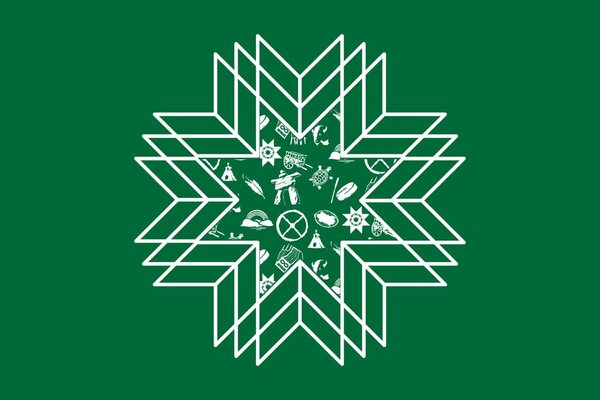





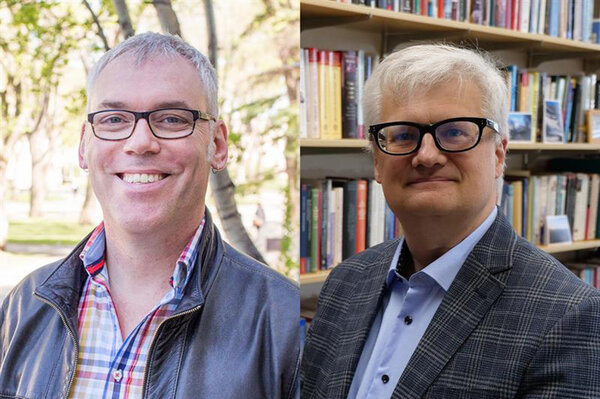

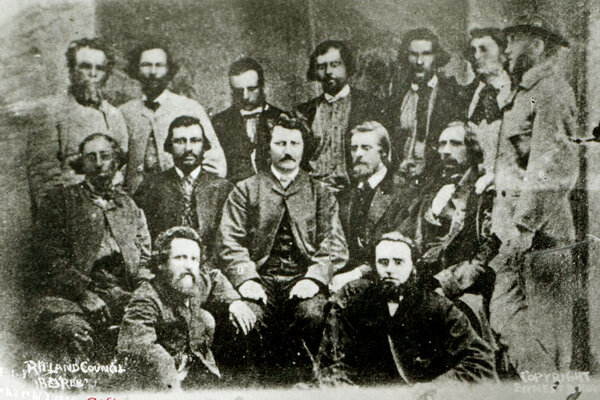
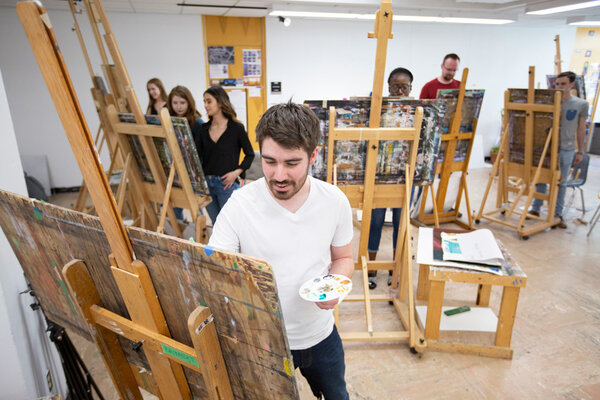
 Academic Plan
Academic Plan Enrolment and Student Experience Plan
Enrolment and Student Experience Plan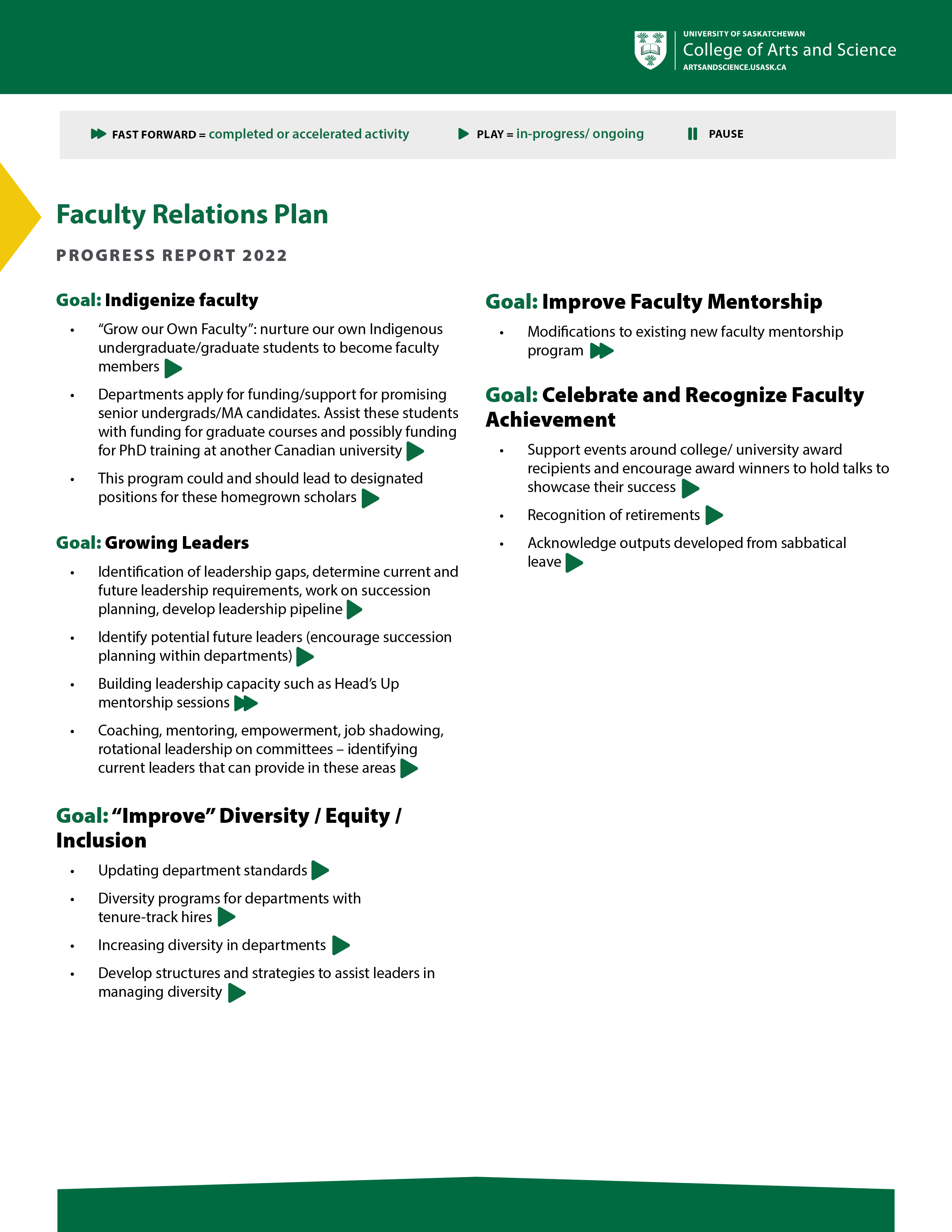 Faculty Relations Plan
Faculty Relations Plan Indigenization Plan
Indigenization Plan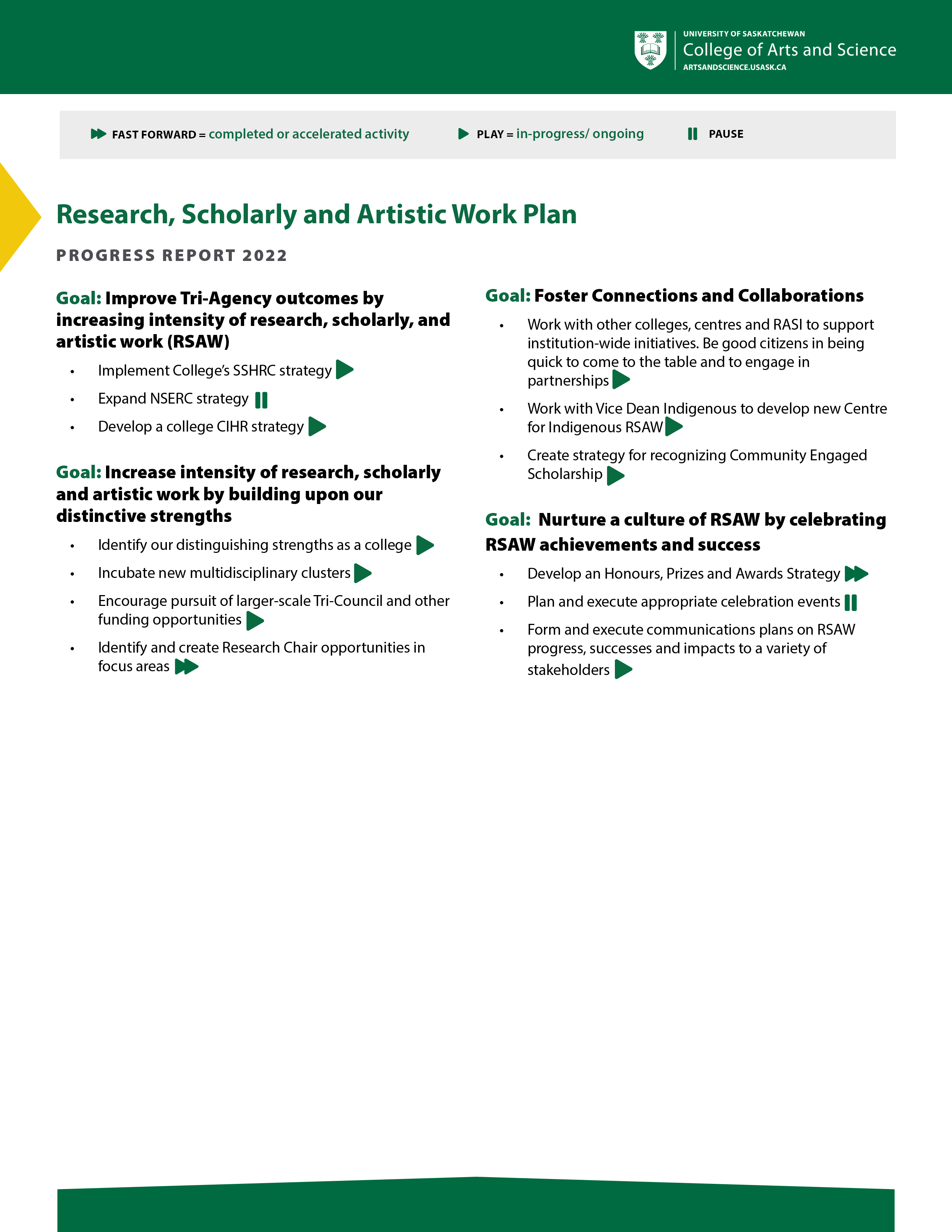 RSAW Plan
RSAW Plan